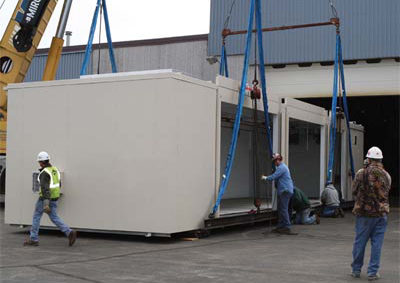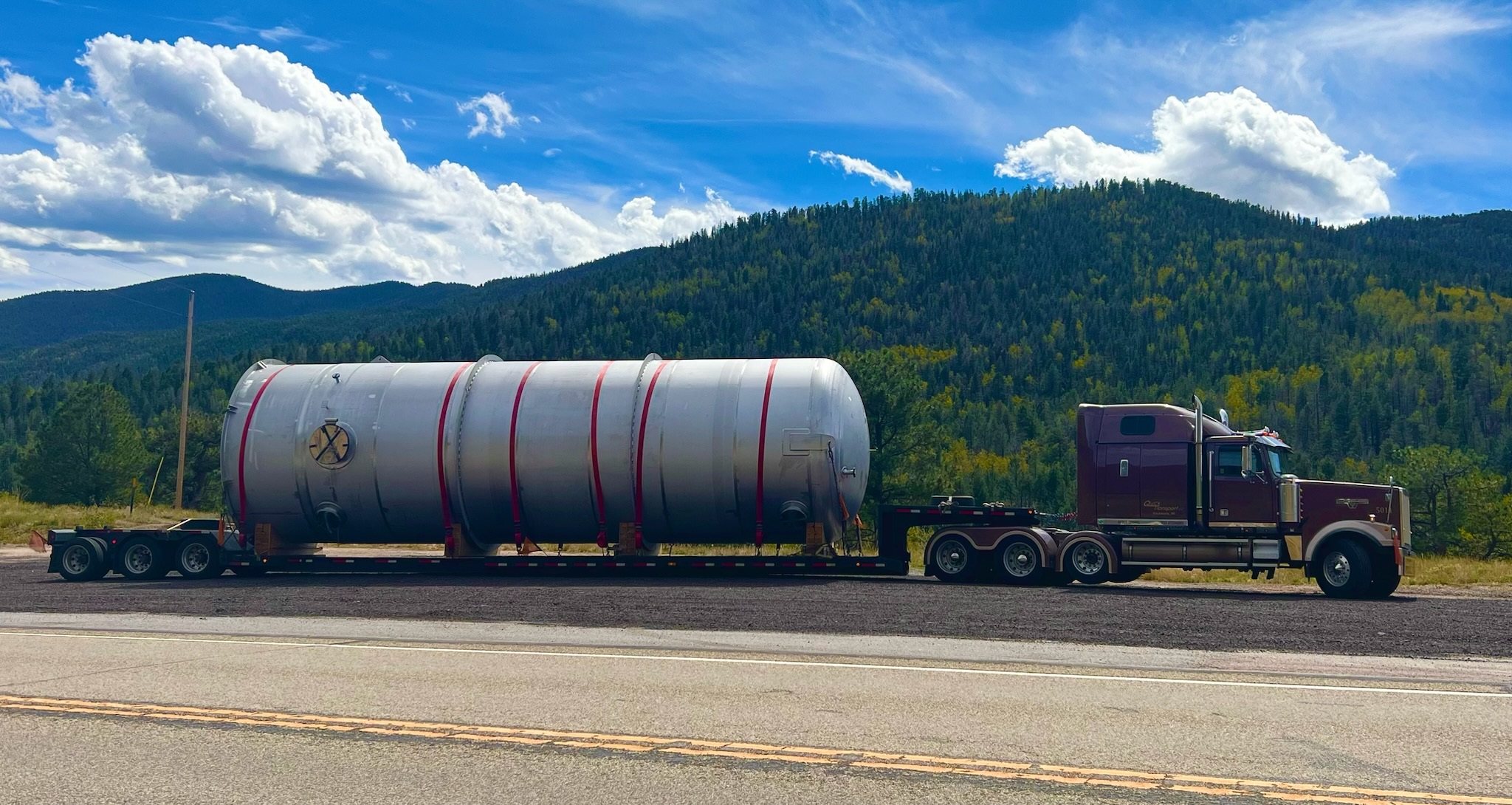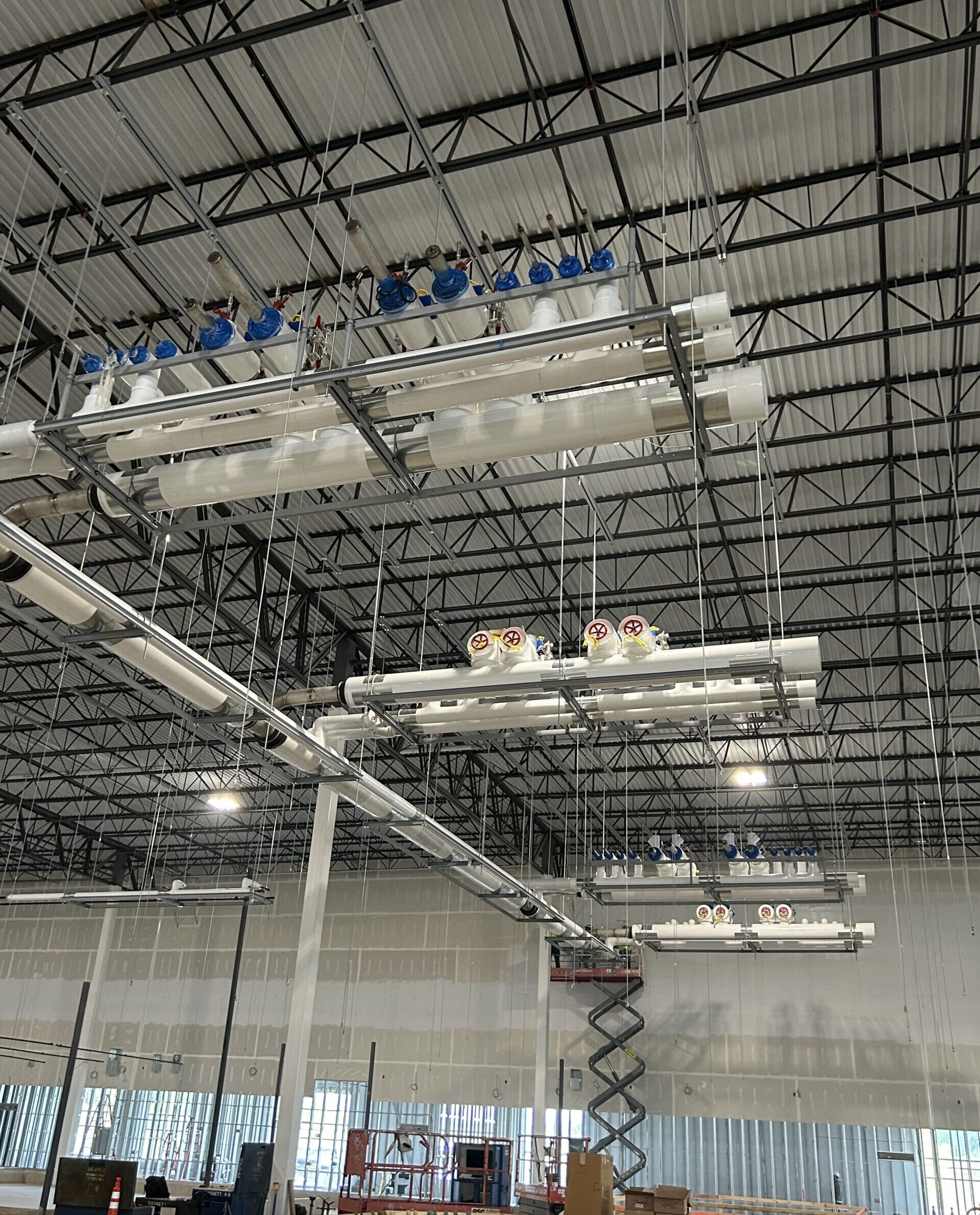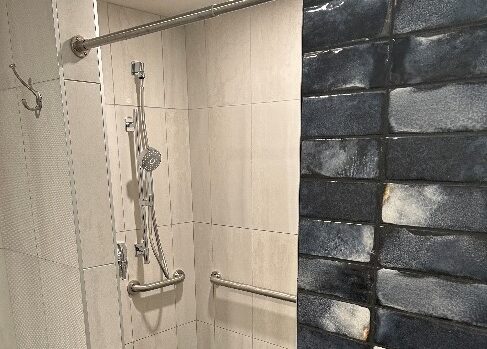When Bay Shipbuilding Co. needed a new way to house painting materials at its Sturgeon Bay manufacturing facility, officials turned to Bassett Mechanical to meet their specialized needs.
The Bay Shipbuilding Co. division of the Fincantieri Marine Group manufactures marine vessels and barges and repairs the Great Lakes freighters, which uses coatings through the production painting process. The paint storage facility the company had used previously was razed during a recent construction project. This required that a new facility be built, one that complied with current codes and design requirements established by regulatory bodies including the National Fire Protection Association (NFPA), OSHA as well as the local city and fire departments.
“These codes and regulations not only protect the employees who work near such materials, but they’re also designed with the well-being of the general public and the environment in mind,” explains Bassett project manager Mark Vandenboom.
Paint storage facilities are either attached to existing facilities or built to be separate from them, as modules. They’re outfitted with a number of safety features designed to reduce damage should a chemical leak or an explosion occur. These features can include, but are not limited to, a sprinkler, water or carbon dioxide system, self-closing doors, approved electrical wiring and components, and ventilation and exhaust systems.
There are also a number of regulations and recommendations from safety authorities as to how chemicals are stored, the type of shelving required, the size, labeling of chemicals and more. Because of this, it is essential that professionals design and construct such facilities, and Bassett was up to the task.
“This project required a lot of research in terms of codes and regulations, and our crew was definitely mindful of the importance of making sure everything went by the book,” Vandenboom said.
The Bay Shipbuilding Co.’s paint storage facility is freestanding and measures approximately 53 feet long by 13.5 feet wide by 10.5 feet high. It sits atop a concrete slab poured for that purpose. Constructed primarily out of steel, with steel studs, and galvanized metal, it is outfitted with insulated walls with a 4-hour Underwriters Laboratory (UL) rating, which essentially means that if there is a fire inside, it can burn for about four hours before fire would escape the unit.
In addition, the building is outfitted with explosion-proof appliances and light fixtures, as well as explosion relief panels, which minimize damage to the building in the event of an explosion.
“This building also has a fire suppression system and a secondary containment feature, which are pans under the floor of the building that will contain a paint spill so that it doesn’t go into the groundwater if there’s a leak,” Vandenboom says.
The project was completed in about three months, in time to meet an early winter deadline set by the company, something Vandenboom attributes to the crew who worked so hard to get everything right.
“This project was accomplished and successful due to the hard work of our guys in the shop, including Brian Nushart, Steve Krueger, Mitch Flease and Rod Swoboda, along with countless other people,” he says.
John Maclean, facilities engineer at Bay Shipbuilding Co., said the building is exactly what they specified.
“We’re very pleased with the finished product,” Maclean says. “Bassett exceeded our expectations and did an excellent job.”




